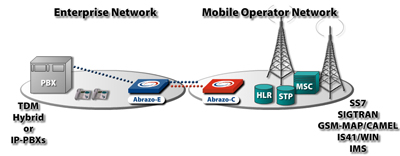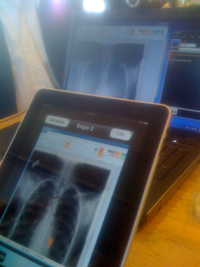Using a dance metaphor, the Tango Networks solution involves the ’embrace’ or abrazo of not a client and a server, but a mobile operator server called the Abrazo-C and an enterprise server called the Abrazo-E. Uniquely engaging the mobile operator infrastructure in the delivery of enterprise mobile UC services, the Tango Networks solution offers several compelling advantages over alternative architectures and alternative solutions that are mobile operator-independent, but device-specific.
[span class=inset-left]Tango Networks uses signaling between servers in the enterprise and in the mobile operator to deliver enterprise mobile UC on any mobile phone, without client software.[/span]Founded in 2005 by wireless network architect Andrew Silver with technology entrepreneur Doug Bartek, and led by ex-Nortel wireless executive Alastair Westgarth, Tango Networks has accumulated over $30 million in venture investment to bring this technology to market. With big backing from industry heavyweights Nortel, Motorola and other investors, the company is poised to deliver customer revenue in 2009.
The company’s architecture leverages an extensive understanding about how mobile communications, and mobile communications signaling in particular, can be suited to enable mobile UC services for a specific enterprise. Recognizing that mobile UC services for enterprise are primarily a signaling challenge, the company was founded on the premise that it would be substantially beneficial to service providers, telecom equipment providers, enterprises and end-users if mobile operators could selectively and cooperatively extend their network signaling services in a secure and controlled manner into the enterprise communications environments of their corporate customers.
Cooperative signaling between a mobile operator and its enterprise customer?
Obviously, something not typically done except to publish caller ID details to the called party. But, Tango Networks has cleverly pushed past that trivial service. Because the Abrazo solution is consistent with the mobile operators’ goals for IMS (IP Multimedia Subsystem) where applications are separated from the physical wireless network delivering the service, the Abrazo offering can securely and elegantly address the call handling translation between an enterprise and mobile operator, securely and simply.
A big part of the challenge of addressing the mobile UC space is to first define the problem. Many vendors define it as a wireless operator bypass problem and have developed thick clients that work best on specific smartphones with WiFi, as a competitive spectrum to the mobile operator. With these implementations not all features work on both the WiFi and the cellular network, not all devices work the same way and there is often client software that the user has to figure out how to download and configure.
Tango doesn’t see the world that way. Instead, they view the problem as one of signaling where call control and meta data about the call are most important. With this perspective, Tango engineers have been able to create a mobile UC offering that engages mobile operators in simple and transparent ways without bypassing them to overcome the biggest impediments to user success: easy deployment and choice of mobile devices.
 First of all, the Tango Networks solution is a 2-server signaling solution. The Abrazo-C, for mobile operator implementations, is a carrier-grade software control node implementation designed to function similarly to a pre-paid authentication server. The Abrazo-C is a multi-tenant platform and can be implemented as a server or network of servers within the mobile operator data center, or as a hosted service maintained by a leading managed service provider to the mobile operator industry.
First of all, the Tango Networks solution is a 2-server signaling solution. The Abrazo-C, for mobile operator implementations, is a carrier-grade software control node implementation designed to function similarly to a pre-paid authentication server. The Abrazo-C is a multi-tenant platform and can be implemented as a server or network of servers within the mobile operator data center, or as a hosted service maintained by a leading managed service provider to the mobile operator industry.
The Abrazo-E comprises enterprise server software that is configured to work with leading UC and PBX platforms such as Cisco, Avaya, Microsoft, Broadsoft (for hosted VoIP and UC services), Alcatel, Asterisk, Mitel and Nortel.
Calls initiated on the mobile device involve service request messages that are recognized by the mobile operator infrastructure as requiring authentication by the Abrazo-C. The Abrazo-C passes the service request to the appropriate Abrazo-E which subjects the user request to enterprise-defined policies, and then instructs the mobile operator’s switch how to route the call in a manner that conforms to those policies and is usually beneficial to both the enterprise and the service provider. The Abrazo-E updates the call record for the mobile user and turns the presence status to off-hook for the duration of the call signaled by the Abrazo-C message that the call has been terminated. Called parties can be presented with the enterprise caller ID if so determined by the policies defined in the Abrazo-E. Presence servers can be updated with the user’s presence status indicating they’re in a mobile call and their location (e.g. Boston) for display in UC clients connected to services such as Microsoft OCS or Cisco UCM.
Calls going into the mobile users’ enterprise DID are recognized by the PBX and a call request is passed to the Abrazo-E which forwards the request to the appropriate Abrazo-C (an enterprise may have relationships with more than one mobile operator) which then passes the calling information to the switch for connection. After the specified rings without answering the call is then passed to the enterprise voicemail server and the Abrazo-E and Abrazo-C trigger a Message Waiting indicator to the user’s desktop/deskphone and mobile device – that is, any mobile device – for simple voicemail retrieval from the mobile or desk.
The Abrazo-C and E interactions assure a single-number experience for the user’s incoming and outgoing calls. The enterprise dialing plan is extended into the mobile arena and popular least cost routing options support internal dialing digits and can terminate a call originated on a Boston-area mobile phone destined for Florida on the enterprise IP gateway in the Boston office, and eliminate the mobile LD expense for both mobile operator and enterprise user. Similarly, mobile users could dial internationally and the Abrazo-C and E servers could automatically traverse the enterprise MPLS network to avoid exorbitant mobile operator-mobile operator international calling charges. Call details are stored in the Abrazo-E-to-PBX interactions while other common enterprise features such as transfer to internal extension, conferencing or call park can be engaged with mid-call interactions supervised by the Abrazo solution. Instant Messaging is supported with any mobile device via SMS-IM text messaging translations, and SMS text messaging can be setup to also use the corporate single-number, a feature supported on the Abrazo-defined mobile phone, but not typically on the desk phone.
Tango Networks have been trialing the implementation with leading mobile operators around the world and are positioned to ramp up the enterprise sales efforts through the PBX resale subsidiaries of carriers, IP PBX manufacturers and independent resellers, probably later this year. Tango Networks has been trialing the implementation with leading mobile operators around the world and are positioned to ramp up the enterprise sales efforts through the PBX resale subsidiaries of carriers as well as PBX manufacturer and independent distributors, probably later this year. They have developed best practices for Alcatel, Asterisk, Avaya, Broadsoft (and Sylantro), Cisco, Microsoft, Mitel and Nortel deployments as well as gaining certifications through the PBX brand technology partner programs.
The technology is gradually being proven in over a classically long development cycle, which is to be expected with telecom infrastructure applications. With a very low user implementation burden (no client required), Tango Networks has a lot to offer by masking the intricacies of the enterprise-mobile operator interactions in their style of mobile UC, just like excellent tango dancers mask the complexities of their art, making it look seamless and effortless.









